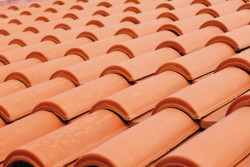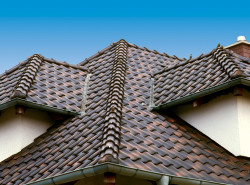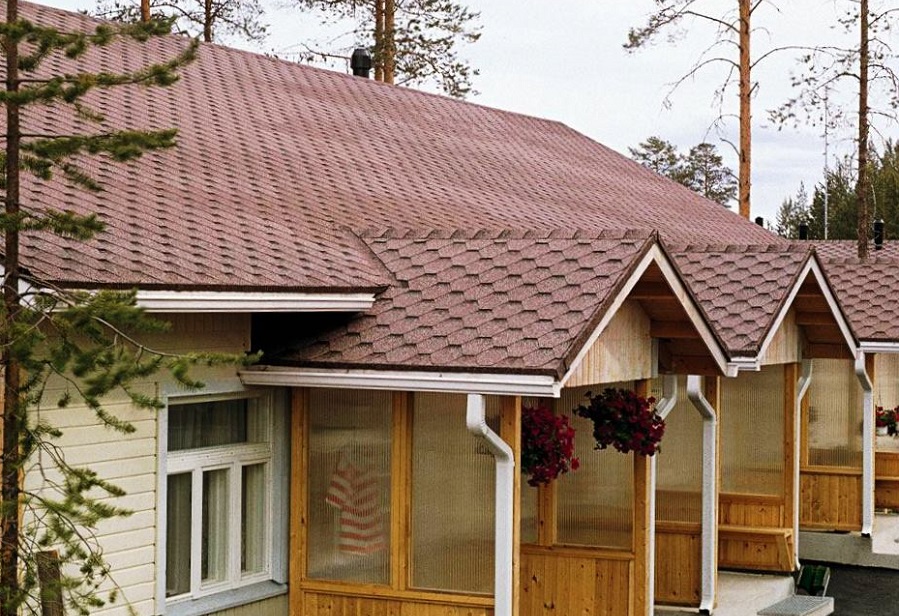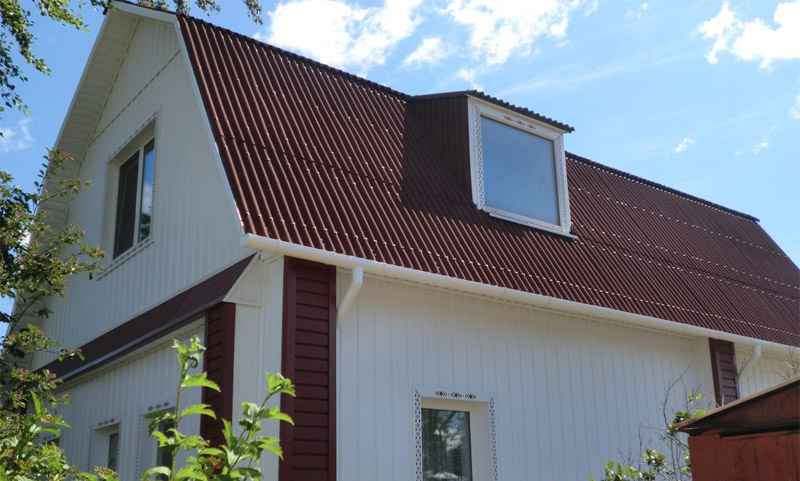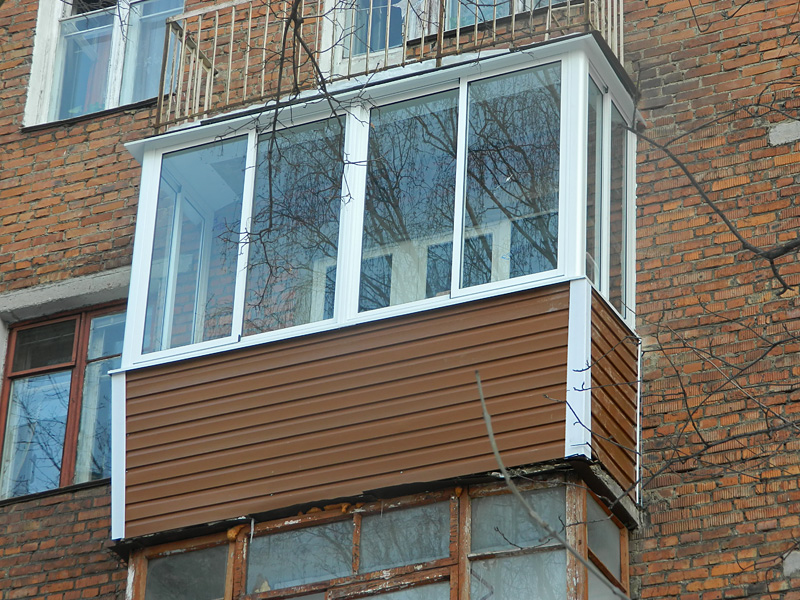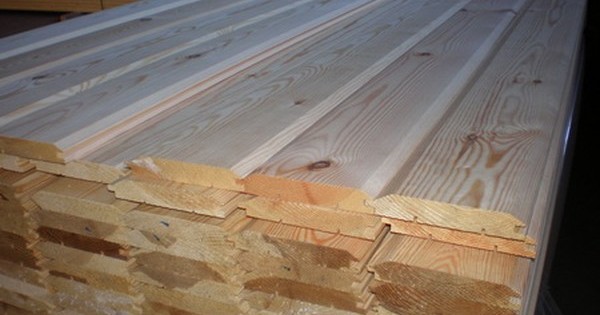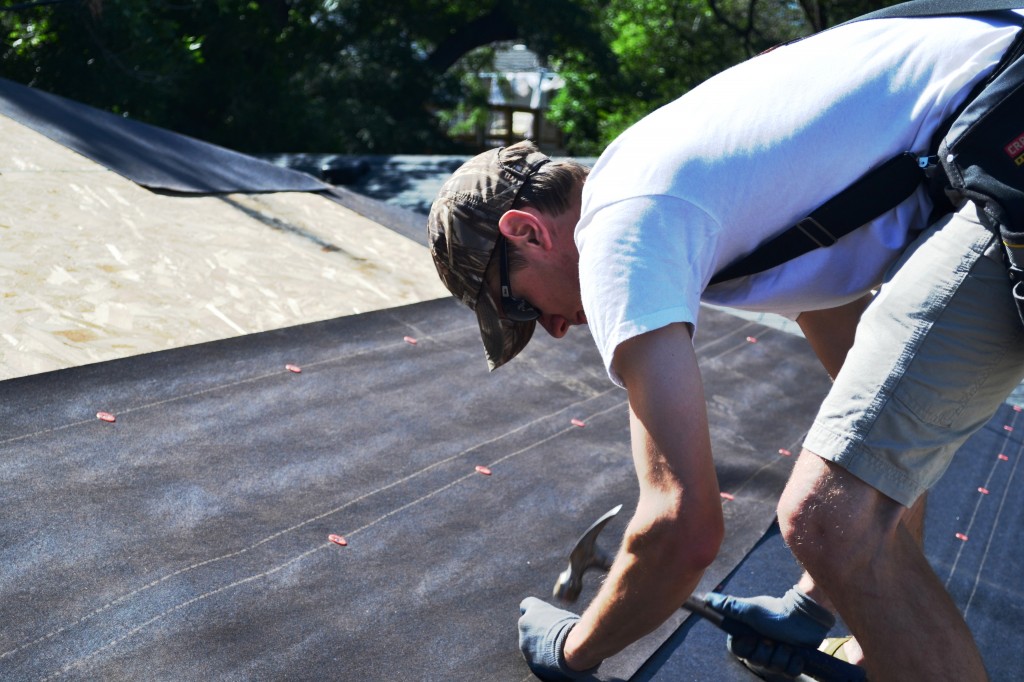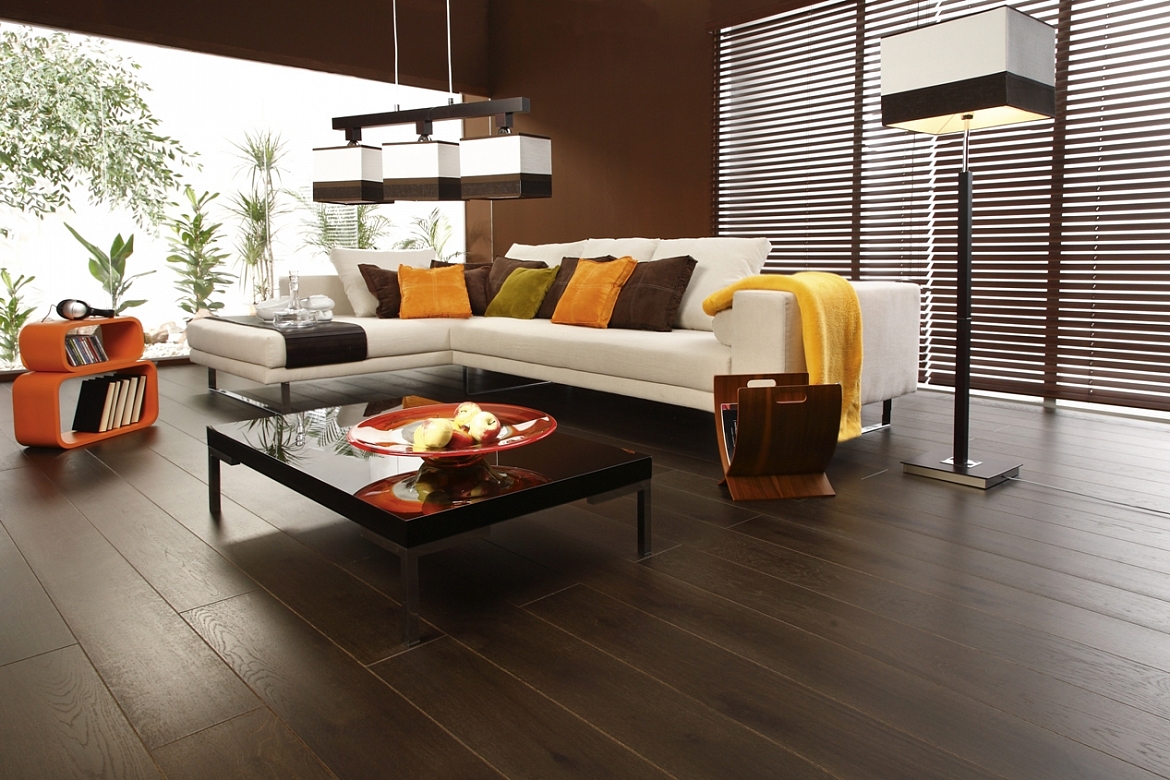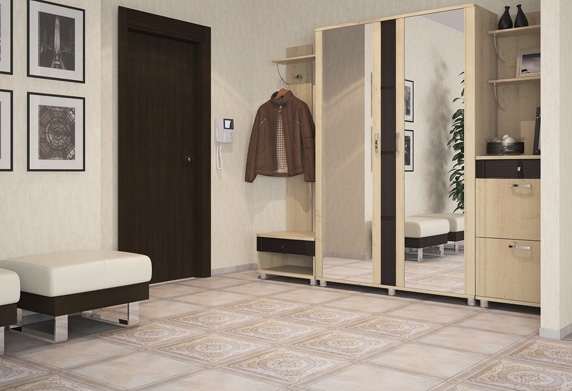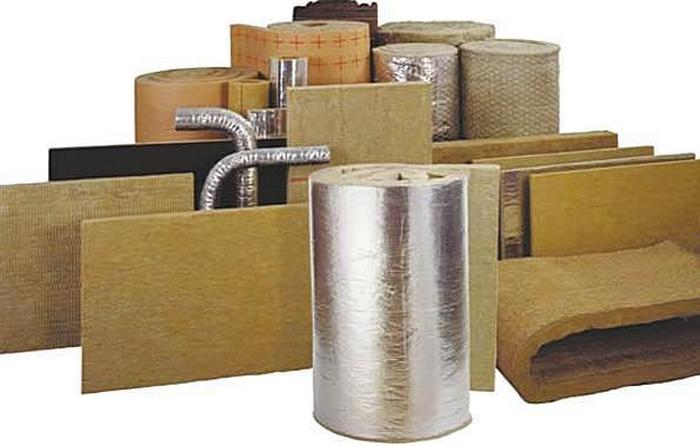Criteria for choosing natural tiles: type, shape, size
Natural tile slowly and confidently begins to regain its former popularity in the domestic market. Today it is valued for its luxurious appearance, environmental friendliness, durability and excellent performance. Moreover, the roof of such a material does not have to be constantly repaired, which is probably the most important advantage of natural tiles. The market for this building material is vast and offers two main types of natural tiles - ceramic and cement-sand. They differ in the method of manufacture and the materials that underlie, but the general properties remain the same. What are advantages of natural tiles and how to choose the most suitable option?
Advantages and disadvantages
Natural tile today has received great recognition and wide distribution in the world due to its numerous benefits:
 incredible durabilitywhich is 100 years or more;
incredible durabilitywhich is 100 years or more;- the ability to install, even if the roof has a difficult surface;
- ecologicaly cleanand therefore completely safe, material;
- ability to stand transfer all environmental influences: precipitation, heat, frost, direct sunlight;
- high strength, reliabilityfire resistance;
- excellent noise and heat insulation qualitiestherefore, the house will be as comfortable as possible: the rain will not beat out the drum rolls throughout the house, hitting the roof, and the optimum temperature will be maintained in winter and summer;
- chic appearance and a variety of options;
- since the tile consists of individual small particles, it is easy to replace them in which case, therefore a minimum of time and effort will be spent on repairs.
In fairness, it is worth noting that natural tiles are not without some disadvantages:
 high price, because for durability, naturalness and appearance you need to pay. But cement-sand tiles are much cheaper than ceramic, because the production process is not so expensive, and the materials for its manufacture are more common in nature;
high price, because for durability, naturalness and appearance you need to pay. But cement-sand tiles are much cheaper than ceramic, because the production process is not so expensive, and the materials for its manufacture are more common in nature;- necessity carry out manual installationlaying each element, but if the roof area is small, or it has a complex shape, then the disadvantage turns into the advantage described above;
- with significant mechanical loads, such a property of the material as brittleness may appear, but for this the pressure must be very strong;
- the material has heavy weight, so you need to be sure that the building will withstand the load.
From all this we can conclude that natural tiles, despite some disadvantages, are one of the most optimal roofing materials at the moment. And if the choice is focused on her, then you need to know main criteria for choosing natural tiles.
Rules for choosing natural tiles
Ceramic or cement-sand?
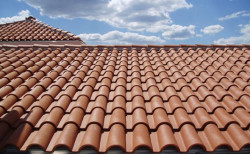 Ceramic tile It is made from clay of certain rocks, the deposits of which in the world are not so many, which explains the high price of the material. The production of this material consists of three stages: preparation, molding of a crock and its firing. The starting material is ceramic, it is also pottery clay, which is mixed until a homogeneous mass is achieved. Then plasticizers are added to it, which help to facilitate the molding process. The tile is made in two ways: stamping and tape. The first case involves the formation of a tape, which is subsequently divided into separate tiles. The second case involves pressing tiles in special metal forms. The semi-finished product, regardless of the method of its preparation, undergoes subsequent firing with a temperature of about 1000 degrees.
Ceramic tile It is made from clay of certain rocks, the deposits of which in the world are not so many, which explains the high price of the material. The production of this material consists of three stages: preparation, molding of a crock and its firing. The starting material is ceramic, it is also pottery clay, which is mixed until a homogeneous mass is achieved. Then plasticizers are added to it, which help to facilitate the molding process. The tile is made in two ways: stamping and tape. The first case involves the formation of a tape, which is subsequently divided into separate tiles. The second case involves pressing tiles in special metal forms. The semi-finished product, regardless of the method of its preparation, undergoes subsequent firing with a temperature of about 1000 degrees.
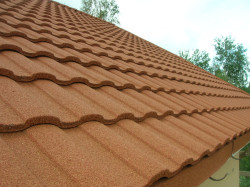 Sand and cement tile during the production process, it is not fired, and its composition, as the name suggests, includes cement, sand, as well as coloring elements. The color of such tiles can be anything you like, and on top of the material is coated with a protective composition to achieve maximum resistance to environmental factors and durability. Since in this case there is no time-consuming and resource-intensive firing procedure, the price of sand and cement tiles is much lower. Moreover, there are much more deposits of necessary raw materials.
Sand and cement tile during the production process, it is not fired, and its composition, as the name suggests, includes cement, sand, as well as coloring elements. The color of such tiles can be anything you like, and on top of the material is coated with a protective composition to achieve maximum resistance to environmental factors and durability. Since in this case there is no time-consuming and resource-intensive firing procedure, the price of sand and cement tiles is much lower. Moreover, there are much more deposits of necessary raw materials.
Outwardly, both types of tiles are very similar, and their performance is generally the same, however, sand-cement tiles even surpass ceramic in strength and frost resistance. That is why today sand and cement tiles are becoming very popular, and often the choice falls on it, especially if there is a need to save money, while preserving all the properties of ceramic tiles known since ancient times.
Color and shape
There are a lot of varieties of natural tiles, so everyone can equip the roof as they see fit. Ceramic tiles can be of such types:
 engobedwhen the material is covered with a thin layer of clay. It gives the tiles dullness and improves resistance to sunlight;
engobedwhen the material is covered with a thin layer of clay. It gives the tiles dullness and improves resistance to sunlight;- glazed has a glossy surface, bright color, and also repels dirt;
- You can also find natural tiles, which additionally not stained, therefore, has a noble natural brown-red color.
 As for forms, then ceramic tiles boasts a decent variety. So, most often you can find tiles of such species as Spanish and German, smooth and wavy, diamond-shaped and double-grooved, beaver tail and gross. In addition, each producing develops and produces its original forms and types of tiles. The variety of colors and shades is huge, and today many manufacturers have begun to produce two-tone tiles.
As for forms, then ceramic tiles boasts a decent variety. So, most often you can find tiles of such species as Spanish and German, smooth and wavy, diamond-shaped and double-grooved, beaver tail and gross. In addition, each producing develops and produces its original forms and types of tiles. The variety of colors and shades is huge, and today many manufacturers have begun to produce two-tone tiles.
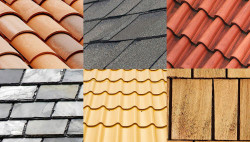 Cement and Sand Tiles can be of any shade, since it is painted in bulk with pigments of a certain color. The variety of forms is more modest, and can usually be found two or single wave S-shaped tiles, and double roman and old german shingles.
Cement and Sand Tiles can be of any shade, since it is painted in bulk with pigments of a certain color. The variety of forms is more modest, and can usually be found two or single wave S-shaped tiles, and double roman and old german shingles.
It is worth noting that the cement-sand tile is larger than ceramic, and its size is 42 * 33 cm or 41 * 24 cm. In the first case, about 10 units are needed to cover a square meter of the roof, and in the second - 15 units are needed.
What size shingles are needed?
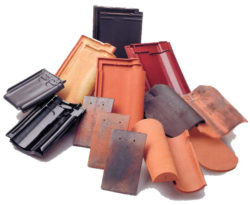 The size of the tile is inextricably linked to its consumption.: the larger the size of each element, the less these elements will be needed. All that natural tile, which is presented on the modern market, fits into the range of use from 9.5 to 15 pieces per square meter of roof.
The size of the tile is inextricably linked to its consumption.: the larger the size of each element, the less these elements will be needed. All that natural tile, which is presented on the modern market, fits into the range of use from 9.5 to 15 pieces per square meter of roof.
Of course, the size of the tiles can significantly change the appearance of the house, and everyone has the right to choose those products that he likes best, but it’s important to take into account some of the advice of specialists. So, if the roof area is small, up to 400 m2, it is better to refrain from acquiring too large shingles, the consumption of which is less than 11 pieces per square meter. Otherwise, the building will look disharmonious.
Connection reliability
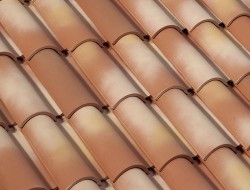 It depends on a reliable lock connection roof tightness. When buying, you need to pay attention to the number of locks: there must be at least two, one on the top and side faces. The protruding part should lie snugly in the groove, which provides reliable protection against ingress of snow and rain between the elements of the tile. If the castle connection is poor, then the roof of the tile will become relatively unusable in 10-20 years, and the thermal insulation may stop working.
It depends on a reliable lock connection roof tightness. When buying, you need to pay attention to the number of locks: there must be at least two, one on the top and side faces. The protruding part should lie snugly in the groove, which provides reliable protection against ingress of snow and rain between the elements of the tile. If the castle connection is poor, then the roof of the tile will become relatively unusable in 10-20 years, and the thermal insulation may stop working.
Building requirements
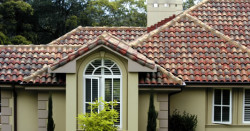 When choosing a natural tile for your home, it is important to remember that it is not suitable for any building for several reasons. This is a rather heavy material: a square meter of ceramic tile weighs about 75 kg, and cement-sand - a little less than 45 kg. It creates significant pressure on the floors, and the rafter system must withstand not only the weight of the tiles, but also possible precipitation.
When choosing a natural tile for your home, it is important to remember that it is not suitable for any building for several reasons. This is a rather heavy material: a square meter of ceramic tile weighs about 75 kg, and cement-sand - a little less than 45 kg. It creates significant pressure on the floors, and the rafter system must withstand not only the weight of the tiles, but also possible precipitation.
There are requirements for the slope of the roof: tiles can be used if the angle of inclination is from 20 to 45 degrees. With a steeper slope, you can also use natural tiles, but it is important to provide additional solutions to improve the reliability and tightness of the roof. It will also be necessary to pay maximum attention to waterproofing and ventilation if the roof slope is less than 22 degrees.
Natural Tile Care
 For this roofing material to serve you faithfully for decades, you need to properly care for it. This is not difficult. All accumulated pollution from the roof is removed with a large pressure of water every 3-4 years, and if the tile has a glossy coating, then the dirt will not accumulate less intensively. If the coating is not cleaned with water, then, unfortunately, contaminants began to penetrate into the inner layers of the material, and special means will have to be used.
For this roofing material to serve you faithfully for decades, you need to properly care for it. This is not difficult. All accumulated pollution from the roof is removed with a large pressure of water every 3-4 years, and if the tile has a glossy coating, then the dirt will not accumulate less intensively. If the coating is not cleaned with water, then, unfortunately, contaminants began to penetrate into the inner layers of the material, and special means will have to be used.
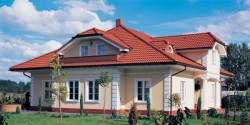 If the roof of your house is decorated with an old tile, which was made when the technology was not so perfect, and a poor coat of paint adhered to the material of the tile, then gradually it can begin to peel off. In this case, it will be possible to return the previous appearance to the material by coloring with special paints. It is better to stain at a temperature of 15-20 degrees and at such a time of the year so that during drying the paint does not overheat in the sun.
If the roof of your house is decorated with an old tile, which was made when the technology was not so perfect, and a poor coat of paint adhered to the material of the tile, then gradually it can begin to peel off. In this case, it will be possible to return the previous appearance to the material by coloring with special paints. It is better to stain at a temperature of 15-20 degrees and at such a time of the year so that during drying the paint does not overheat in the sun.
In conclusion
The choice of natural tiles is huge today, it has earned popularity for its stunning performance and ease of care. To choose the most suitable material for specific conditions, it is necessary to take into account a lot of factors: color and appearance, size, type of coating, as well as the material of manufacture, because cement-sand tiles will cost several times cheaper and almost identical in properties to ceramic.

